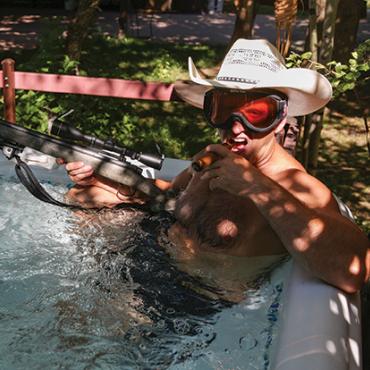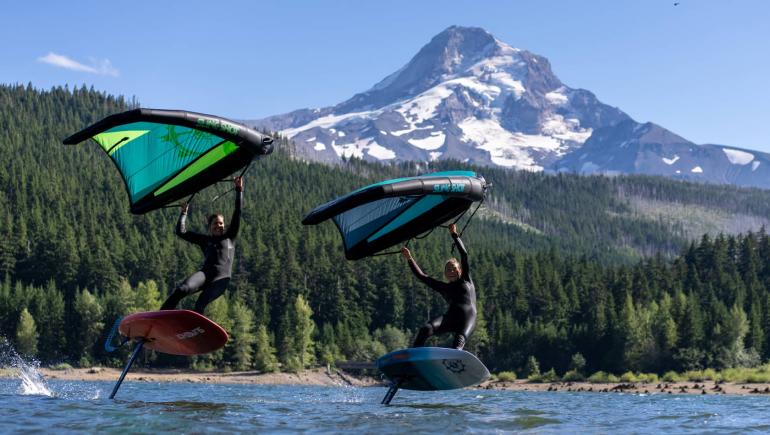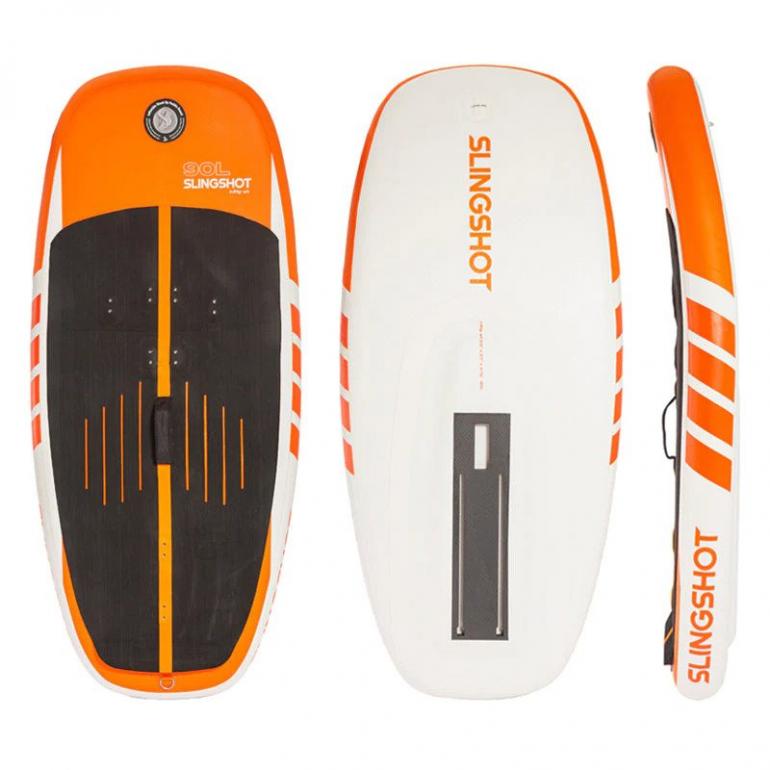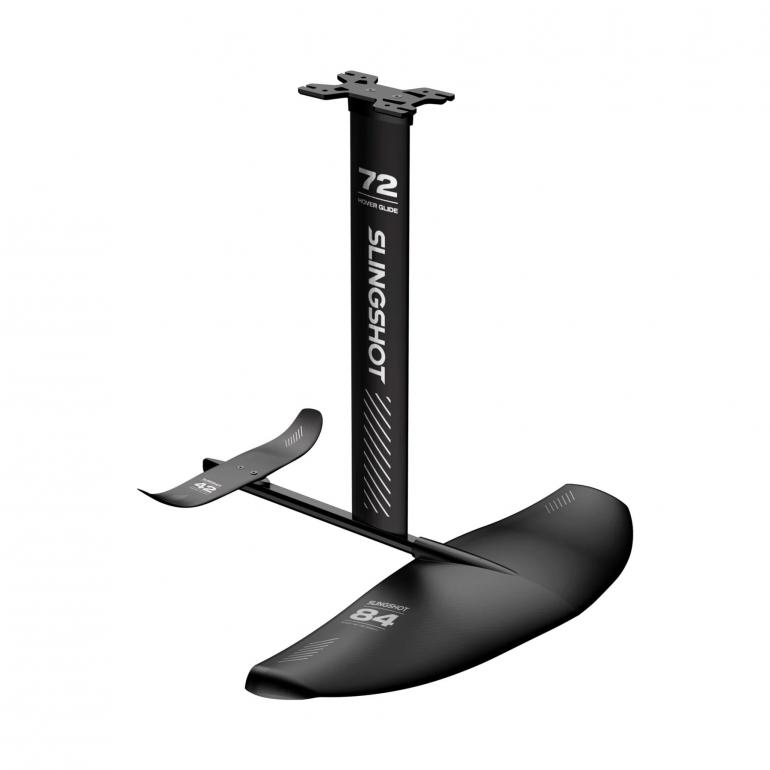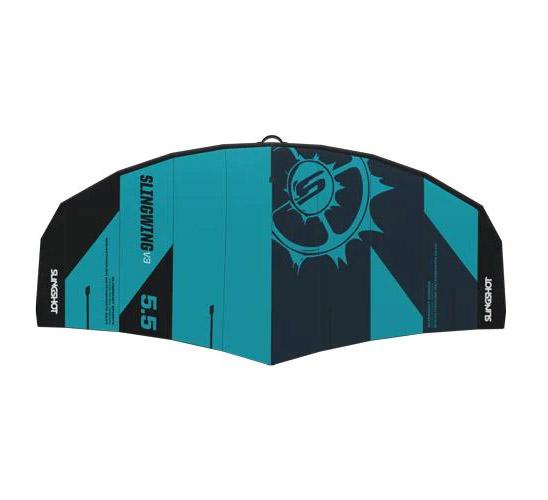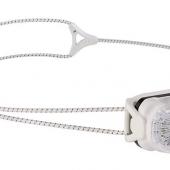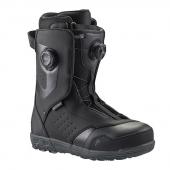Wing and a Prayer
Watersports' latest craze.
Given our landlocked nature, being some 600 miles from the nearest ocean, we Bozemanites are often a bit behind when it comes to watersports. Case in point: wingfoiling. You may have heard of it, but have you seen anyone doing it? We hadn’t either (except on YouTube), and we impulsively picked up a full setup from Slingshot—and got our asses kicked. Turns out, this sport ain’t easy to learn. We’ll keep at it, but in the meantime, here’s a rundown on getting geared up and into the water.
First off, you’ll need a board. Slingshot’s I-Fly V1 is compact, durable, and inflatable—so you can collapse it for transport and take it anywhere. It’s beginner-friendly—or rather, less beginner-unfriendly than other boards, which are designed for more experienced foilers. Don’t overestimate yourself and plan on growing into an intermediate board; rather, plan on being a beginner for a long time, and get a board to match. In this regard, the I-Fly V1 fits the bill. $1,299 for the 120L size.
Attached to the underside of the board is the foil. The Hover Glide FSUP V4 package includes all the different pieces you’ll need (pedestal, fuselage, stabilizer, wing), packaged neatly in a well-organized, protective case. Well-engineered, with quality construction, this aluminum-and-carbon platform will stay with you as you progress. It’s also a versatile option—you can attach it to a windsurfing board or ride it in the wake behind a boat, sans windpower. $1,222.
Next you need propulsion, which in the absence of ocean waves, means either a kite or a wing. To keep things simple, we chose the SlingWing V3, a rigid wing that inflates quickly and grabs the wind easily. It’s compact, for easy handling, and is burly enough to endure the beating you’ll give it as you’re learning the ropes. $1,129 for the 5.5m size.
Finally, some tips. If possible, find someone who’s done it before, and buy him or her a six-pack in exchange for some hands-on instruction. Worst-case scenario, watch instructional videos. Lots of them. The dynamics of this activity are not intuitive, and without clear guidance beforehand, all you’re going to do is entertain your friends as you flail and flop in the water. Also, you need wind. It’s not optional; it’s imperative. Without a good, strong, steady wind, you’ll never get moving and stand up on the board, let alone rise up on the foil. Wait for a windy day on Ennis Lake, or try your luck at Dailey Lake, which has more consistent wind. Check the weather stations near Harrison Lake, Hebgen Lake, and Canyon Ferry, and follow the wind.
For safety, always wear a helmet and PFD—if you go ass-over-teakettle and the foil rams into your head, you could be knocked unconscious, or at least slapped silly. You’re going to struggle enough just learning to wingfoil; you don’t need to make it harder by throwing in lacerations, contusions, and ambulance rides. On that note—if you see us out there on the water this summer, keep your distance. We can’t promise that we’ll be able to maneuver around you.
All items available at slingshotsports.com.


